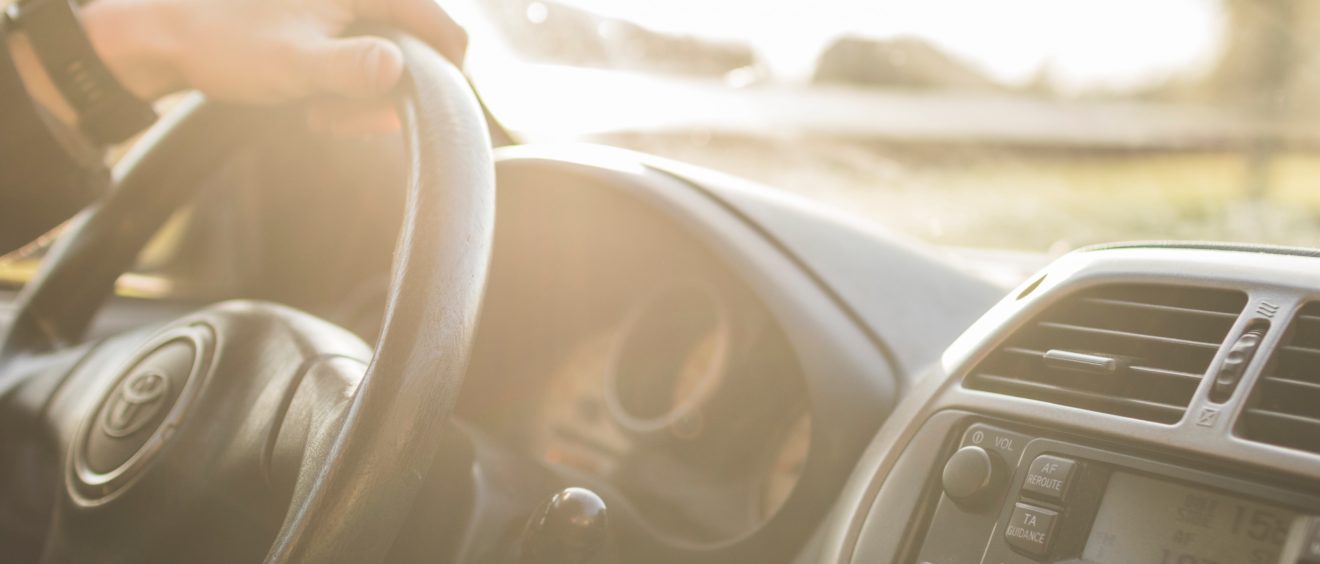
6 Tips for Singing in the Car
Building Healthy Habits for Fun Singing.
Our cars: our safe little singing sanctuaries. The place where we live out our dreams of stardom, crank the volume and really belt it out. The freedom! The fun! The glory!
You may have also noticed that sometimes your car concerts don’t last very long because your voice unexpectedly feels tired or strained. Here are some tips to help you sing in the car in a more healthy and sustainable way, so you can let your inner rock star out.
1) Pay attention to how you’re sitting.
An upright neutral posture allows your breath to flow easier, and allows you to access the core muscles you need to support the sounds you make when singing. Healthy posture will also help you feel a little more relaxed and confident, which makes it easier to open up and let the song flow out.
To get your posture into a nice neutral position, start by noticing if you’re leaning to one side or the other, and whether you might be slouching. Take a moment to square off your hips and gently press your low back into the seat, which will create a little length in your spine. Roll your head from side to side a few times and release any tension in your neck and shoulders
2) Notice how you’re breathing.
There are some nuances to the concept of breathing for singing, but to keep it simple for singing in the car, just try to remember this: you want to inhale and exhale to and from your core. Some think of this as belly breathing.
To access your core for breathing while you’re sitting in the car, bring some attention to how you are already breathing. Are your shoulders tense? Is your breath shallow or stuck in your chest? Take a moment to inhale and exhale a few times. With every inhale, invite in a deeper breath by bringing some awareness to your belly, your low back, or your hips. With every exhale let go of any tension or activation in your shoulders, neck and chest.
Side note: Check in with how tight the seatbelt is across your lap. If it’s too tight, it might constrict your ability to breathe into your core. Also notice if your bladder is full. It’s difficult to breathe into the core while seated with a full bladder.
3) Check in with how your voice feels before you begin.
Your body is your instrument, so checking in with your voice means checking in with yourself. Run a quick systems check on how you feel physically, emotionally, and mentally.
A few things to keep an eye out for:
-
- Is it first thing in the morning? Have you used your voice at all yet today? If not, it might take a few minutes to warm up.
- Is it the end of a long day? Have you already used your voice too much? If so, the singing might not feel that great.
- Have you eaten? Are you tired? Are you tense? Any of these scenarios will make it harder to sing, so have a little extra patience.
Often times, being a good singer means knowing when NOT to sing. If your voice is not up for the task, don’t force it. Enjoy the music playing around you, while you let your voice rest so the next time you want to sing, it’s ready to go.
4) Notice if you’re pushing in order to hear yourself.
We often don’t realize that we’re pushing too hard when we’re singing in the car, until suddenly our voice feels really fatigued. Here are some things to consider when you find yourself pushing:
-
- Is there a lot of road noise? Things like loud trucks, tires moving quickly on the paved highway, etc. If so, perhaps wait until you hit a quieter patch of your journey.
- Is the window open and causing a lot of wind and other outside noise to come in? If so, perhaps close it and put on the A/C.
- Is the volume on the music up so loud that you’re trying to sing over it? Maybe turn it down just a touch, so that you still feel immersed in your song, but you don’t have to compete with it.
Keep in mind: Unlike your shower, which is made out of tiles that reverberate and amplify your singing, car cabins are designed to cut down on noise. Therefore, by default, you’re simply not going to hear yourself as well. Trust your posture and your breath, and when you notice you’re starting to push, gently remind yourself to back off a little.
5) Open your mouth and enunciate.
One of the main causes of vocal fatigue when driving is the fear of opening one’s mouth and being caught singing. Eek! The embarrassment of being caught singing along with (insert guilty pleasure song title here).
Unfortunately, if you don’t open your mouth, you will overwork your throat. That means that not only will your voice fatigue faster, it will also be much harder and less enjoyable to sing, and it won’t sound as good. Here are a few options you can consider when you’re feeling shy:
- Sing where there are fewer cars on the road.
- Sing at night when it’s too dark to be seen.
- Open your mouth and sing and don’t worry about what’s going on in the other cars because they’re probably not paying attention to you anyway.
- Open your mouth and enunciate and, hey, if you get caught you can have a laugh or make a road friend with another driver. You’ll do them a favor by showing them they also have permission to sing out loud.
- My personal favorite: pretend you’re talking on the phone via bluetooth.
6) Don’t overdo it.
So, you have a 5 hour drive and you’re going to practice the WHOLE TIME. Yayyyy!
No.
Remember that your voice is part of your body, and your body gets tired when it works for long periods of time. Ergo, so will your voice. Be patient and compassionate, and pay attention to what your voice, and the rest of your body need. If it’s tired, let it rest. If it feels dry, drink something. If you’re starting to feel tight, stop and stretch and get loose again. If you can’t breathe because you have to pee, stop and pee. Also, don’t forget to eat. Just like your car, if your body has no fuel, it can’t do anything.
Bonus Tip: Don’t be a distracted driver
If you are in rush hour traffic, or you are trying to navigate to somewhere with Waze, put your singing on hold. When you’re in the car, the driving comes first. Fit in your singing practice only when it is safe to do so. Otherwise, both your driving and your singing will suffer, and there’s no benefit to that.
—– —– —–
Share Your Thoughts!
I’d love to hear whether you found these tips helpful, and what other tips you use to get the most out of your car singing experiences.
Tell Your Friends!
Click the share buttons in the bottom right of this post to spread the word, if you found this helpful. And sign up for the mailing list for your weekly dose of inspiration, motivation, tips, tricks, and tools to help you Own Your Voice.

